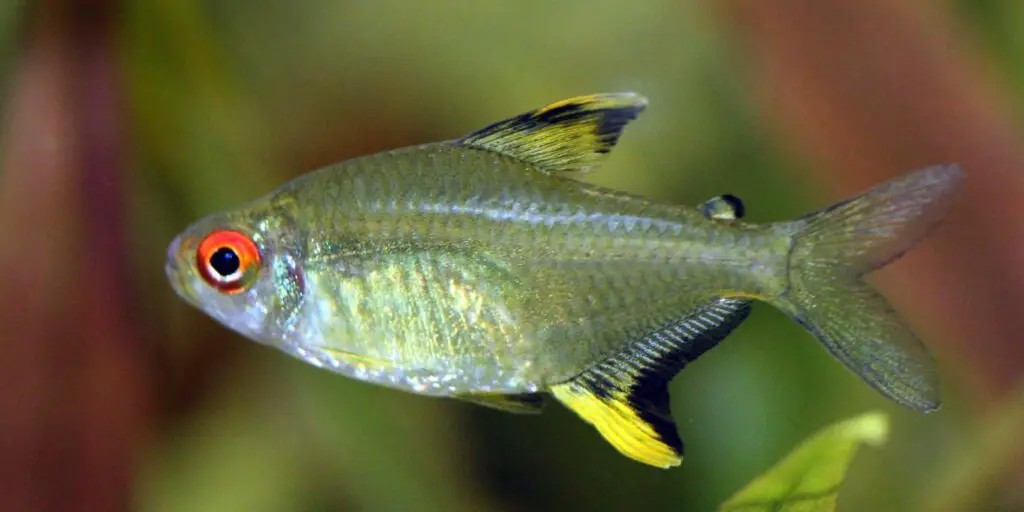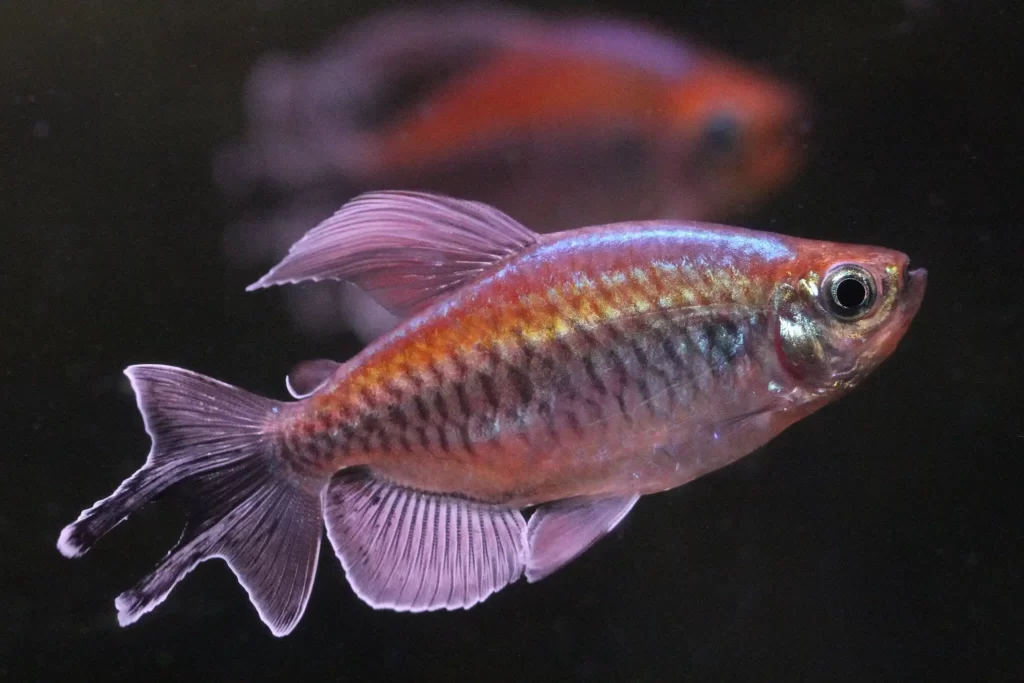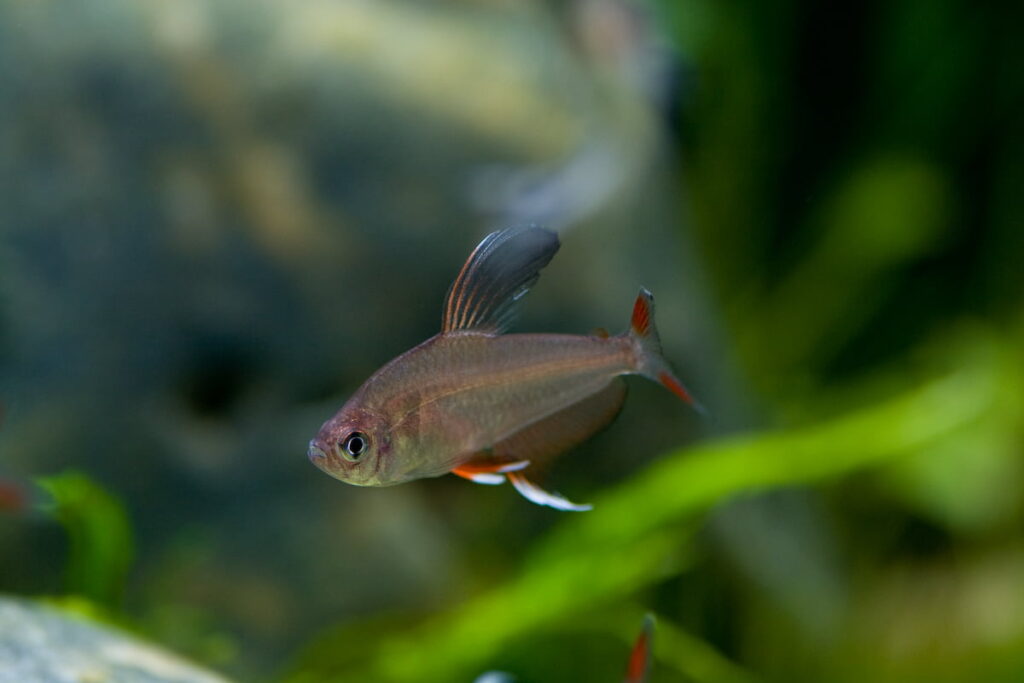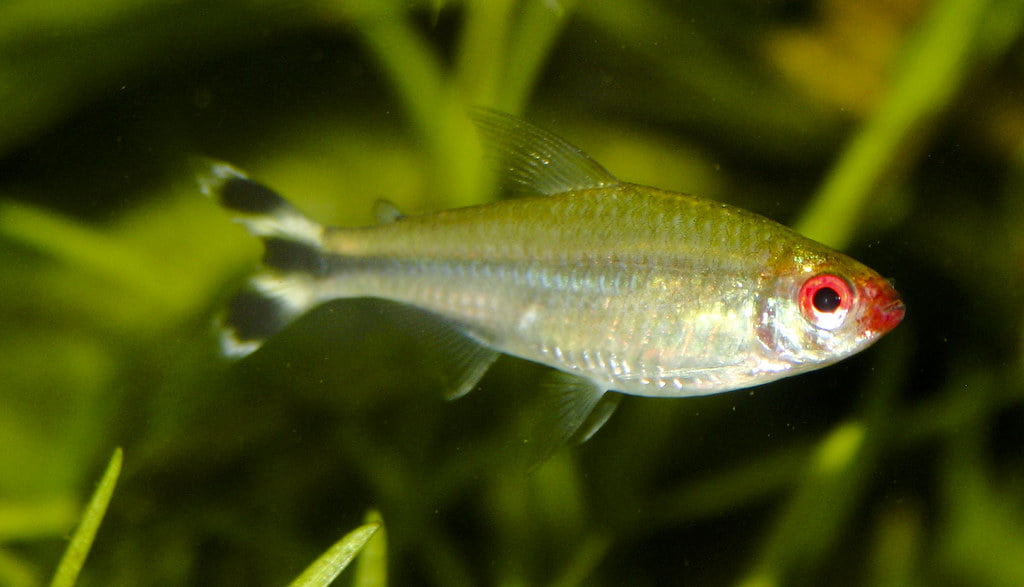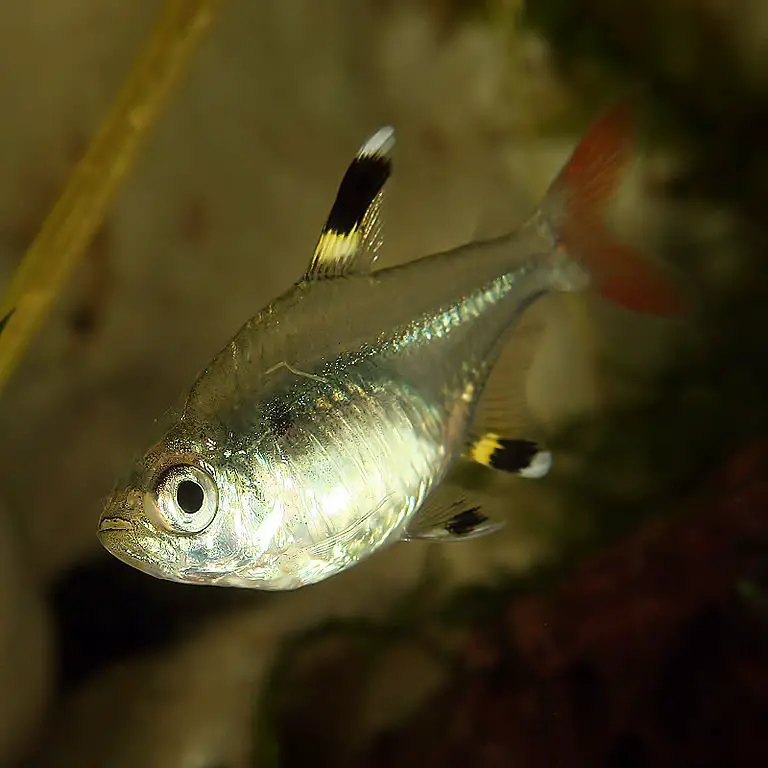I’m in a cafe sitting across this vibrant aquarium, thinking damn I’d like to keep a fish tank just like this one. I share my apartment, so my space is limited. As I browse the fish gallery, I come across this minimal fish keeping guide for beginners and turns out, and Lemon Tetra (Hyphessobrycon pulchripinnis) is one of them.
Lemon Tetra, belongs to a family of Tetra and originating from Amazon, are inhabitants of clear water accompanied by a moderate current. A subtle tinted shade of lime with an intense yellow lower fin is what named the “Lemon Tetra”. Lemon Tetras don’t take up much space, are relatively small and peaceful species that have a long lifespan. Hence, this makes starting a tank with Lemon Tetra so much easier.
Carry on with me on this journey to find out all that you need to know about starting your tank Lemon Tetra (Hyphessobrycon pulchripinnis)!
All about Lemon Tetra (Hyphessobrycon pulchripinnis): A short description
Lemon Tetra (Hyphessobrycon pulchripinnis) originally is from Amazon, South America. The shallow and shore dwelling Lemon Tetra are often found in vegetated areas of overgrown streams and narrows. This species is bred and is available commonly.
Lemon Tetras have a distinct translucent and crystalline lemony appearance, which makes it so attractive.
An interesting fact is that Lemon Tetra is one of the oldest fish kept by the aquarists.
The cost of each pair of Lemon Tetra is around $4. Since they need to be schooled, a group of 6 might cost you around $12. They are fairly and reasonably priced.
We all fall in love with some species, but eventually, they pass away. Fear not because Lemon Tetras stick around for a while. The average lifespan of a Lemon Tetra is 6 years. But they can easily live up to 8 years or more if they are taken care of properly.
Color
The color of the lemon tetra is yellowish-green. They make the tank look extra refreshing with their bright-colored body. It definitely draws the attention of the viewers and makes the tank more attractive. It also has a tint of white at the lower part of its body.
Did you know that?
Male Tetras, when mature, become brighter than they originally were!
And female Tetras turn a little rounder when mature.
Social Behavior and Tankmates
Tetras are usually peaceful and friendly, and Lemon Tetras are one of them. They like to swim together in groups and often get along with the same species. Its inquisitive nature makes it a good community aquarium inhabitant.
Lemon Tetra can show semi-aggressive to aggressive behavior in case they sense a threat and will stress a lot in such a situation. You might have seen different vibrant colors of species being schooled together. It is the same case for Lemon Tetra. However, they only school with a limited type of species. They can easily adapt to their own species in terms of working behavior very well.
They go along pretty well with small Danios, barbs, dwarf cichlids, Corydoras, and Otocinclus catfish. However, they can outcompete certain species like snails and crayfish.
Read Full article on Tetra fish tank mates and fish you should avoid.
Difficulty Level
Although Lemon Tetras are hardy fish, you still need to put in an effort for these beauties. On a scale of 1-10, Lemon Tetras stand at a 6 in terms of difficulty level. These commercially bred Tetras are readily available and a good choice for beginners.
To see how much you’d rate them, let’s look at how we need to take care of them:
Care Sheet for Lemon Tetra (Hyphessobrycon pulchripinnis): tips and facts
Tank
The first and foremost thing to consider while choosing your tank is the species, size, and nature of the fish. Lemon Tetra can grow up to 2 inches (5 cm) max. Considering the “One gallon per inch of fish,” you will require a tank size of 15 gallons at minimum.
This shoaling species must be kept in a school with at least 6 fish of its kind. It is obvious that a bigger tank is required if you want to keep more fish.
Lighting
Since Lemon Tetras have a naturally vegetated home, it is very important to recreate their natural habitat in an aquarium. Lemon Tetras like a dark environment and like to be covered with plants.
The light requirement for this species is fairly low. LED lights are perfect for flaunting tier natural yellow color. A planted tank also requires extra light. The tank should be kept away from natural light as much as possible.
Decoration and Substrate
Small centerpieces with holes in them like driftwood and twisted roots are a great piece to start with. A few hiding spots help create a fun environment for Tetras.
You can decorate your aquarium with live plants while creating a habitat for your Lemon Tetra. Additionally, a planted aquarium can require fertilizers, minerals, and soil-based substrate.
To enhance the appearance of your aquarium with Lemon Tetra, a darker substrate is recommended. This will help balance out the color and create magic like a contrast. However, Lemon Tetras prefer a sandy substrate. A darker environment with plenty of plants and plenty of space to swim around will definitely keep your Lemon Tetra happy.
Diet
This pretty fish is popular for its lemony appearance. A good diet helps the fish in maintaining its color very well. Lemon Tetras are omnivorous.
In the wild, they feed on plant matter and worms. A proper diet for Lemon Tetra can include all kinds of living, fresh, and flaked foods. Color enhancing food like Tetra Ruby is also available in the market and very much recommended.
Brine shrimp and blood worms are a great treat for your Lemony friends as well.
Lemon Tetras need to be fed several times a day, yet only in small amounts that they can consume within 2 minutes.
Fact: Albino Tetras are developed from Lemon Tetras.
Read Full article on Tetra Fish Diet.
Maintenance
If you can’t maintain your tank, then your fish will probably turn sick and won’t yield the best results. The key to a happy tank is a good maintenance schedule. Any basic maintenance schedule includes the following things:
Temperature
Lemon Tetra can survive at a temperature of 70 – 80°F (21 – 27°C). If you stay at a colder place, you might want to put a heater in your tank.
pH level
Lemon Tetra can tolerate water pH levels ranging from 6.0-7.5. This means that they survive in a more acidic environment. Make sure to keep a balanced environment during water changes.
Hardness
A soft to the moderately hard water with a sufficient mineral quality is a must for Lemon Tetra. You can keep this steady by checking using a water testing kit.
Filtration
Filtration for any tank is necessary. This helps to keep your tank clean and healthy and free from harmful toxins like nitrate. Even fish produce bio-waste that needs to be cleaned.
Different types of filter and filter media are available in the market, from external to internal filters to biological media. To give your Tetras some space, external filters can prove handsome.
For Lemon Tetra in a group of 6 members, you will require a hang on back filter according to your tank size.
A tip is to make regular partial water changes once a week with vacuuming the substrate and trimming the live plants as much as possible. A water testing kit’s result will convey what you should do next in your tank.
Lemon Tetra Diseases
No species ever is immortal or has an evergreen immune system. Eventually, someday or the other, your fish can catch a disease even in a well-maintained tank.
The most commonly occurring diseases in Lemon Tetras are Ich, skin flukes, parasitic infestations, and infections. These diseases are most common in freshwater fish. For detailed information on such diseases and cure, visit my article on tetra fish disease and treatment.
A good aquarist must keep an eye on the fish and its conditions like signs and symptoms. Diagnosing the disease after finding out the problem should keep your fish healthy and wealthy.
How to Breed Lemon Tetra (Hyphessobrycon pulchripinnis)?
Lemon Tetras are said fairly easy to spawn. These commercially bred species are readily available in the market.
If you want to breed your tetra fish, a single male with a few females in a separate breeding tank is how they should be paired. Remember that the tank should be at most 10 gallons capacity to induce spawning with a dim light setting. Feeding live food in small amounts should keep them enough.
When it is time, an adult Tetra can lay anywhere from 250-300 eggs. They scatter their eggs around leaves of plants. Therefore, a planted aquarium with spawning moss clumps is important. The nature of Lemon Tetra is such that they exhibit no parental care and cannibalism on birth. The parents must be removed after they give birth.
For a successful breeding process, water conditions are:
- a 10-gallon tank
- clumps of plants and moss for the fish to lay eggs
- soft and acidic with a pH of 6.5 to 7.2
- the temperature of 75 to 78.8° F (24 to 26° C).
- sponge filter for filtration and aeration.
The eggs will hatch in approximately 24 hours, and the fry will come out. There is no guarantee that all the fry will survive. But the ones that have survived will then grow strong. You can feed a small number of worms to the fry in a few days after birth.
Lemon Tetra Summary Chart
| Scientific name | Hyphessobrycon pulchripinnis |
| Care Level | Easy |
| Origin | Amazon River |
| Behavior | Community and peaceful fish |
| Size | Approximately 2 inches (5 cm) |
| pH | 6.0-7.5 |
| Temperature | 70 – 80°F (21 – 27°C) |
| Water hardness | Soft to Moderately Hard |
| Lifespan | <8 years |
| Diet | Omnivorous |
| Minimum aquarium size | 15 gallons |
| Acquaintances | Similar sized fish like Danios, Guppies, etc. |
Conclusion
Finally, I can say that Lemon Tetra (Hyphessobrycon pulchripinnis) are a great fish to start with considering their requirements, their aesthetic lifestyle, and their lifespan.
I would definitely like to have Lemon Tetra in my fish collection someday. I hope it is the same for you. However, it is up to you if you would like a different species. Lemon Tetra, hardy, easy freshwater fish are also great acquaintances for other fish.
I hope you found all you needed to know about starting with Lemon Tetra in this short period of time.
